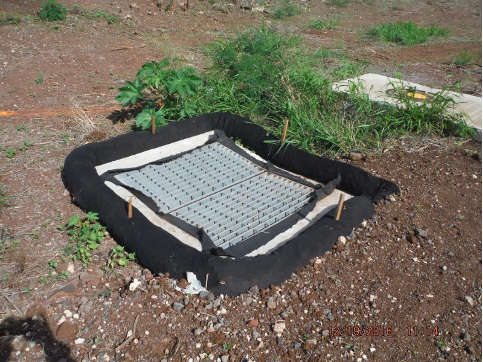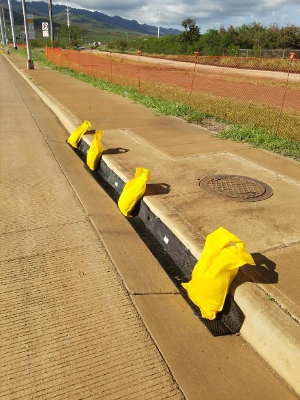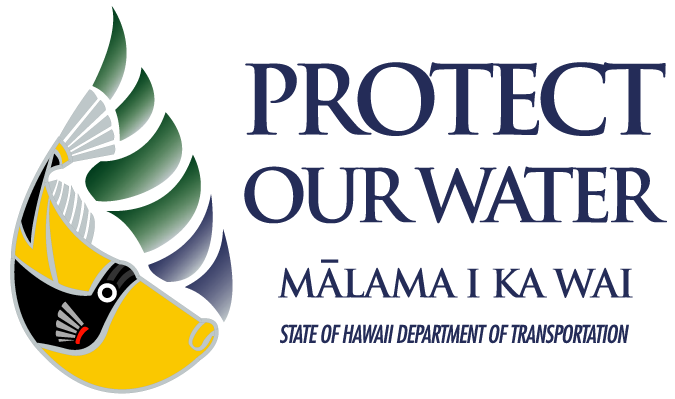Are storm drain inlets protected on your construction site?
Unlike sanitary sewer systems (wastewater), where water is treated before being discharged back into the environment, rainfall runoff that flows into storm drains in Hawaii is not typically treated before it flows directly into our streams and the ocean. During construction operations, potential pollutants such as sediment, oil, metals, and construction debris may be picked up by storm water runoff and flow into storm drains if they are left unprotected. The State of Hawaii, Department of Transportation, Highway Divisions (DOT-HWYS) implements several best management practices (BMPs) to prevent this from happening. One of the BMPs that is commonly used by DOT-HWYS and construction contractors is a storm drain inlet protection device.

There are two types of inlets primarily found in DOT-HWYS construction sites and right-of-ways (ROW), grated drop inlets and curb inlets. Inlet protection devices shall be used to prevent storm water runoff from entering an inlet by two main processes; filtering and sedimentation. These devices often have mesh or grating which stops debris and larger particles from entering the storm drain. Inlet protection devices may also cause ponding, which results in the settling of sediment and other contaminants, and reduces the amount of pollutants that can enter the storm drain and surface waters.
All storm drain inlets that may intercept sediment-laden runoff from the construction site shall be protected prior to the commencement of land-disturbing activity; this includes inlets within the project limits, and additionally to any structures downstream of the project limits that could receive storm water runoff from the construction site.
Construction projects that occur within DOT-HWYS ROW, and/or discharge to DOT-HWYS municipal separate storm sewer system (MS4) are required to have plans that mitigate storm water runoff from the site. Projects that disturb more than one acre of land require a Storm Water Pollution Prevention Plan (also known as a SWPPP). Projects that disturb less than one acre of land require a Site-Specific BMP Plan (SSBMP). These BMP plans are “living documents” that identify the specific BMPs to be implemented and modified throughout the duration of the project.
It is important to choose the BMP device that works best for your specific site conditions. Additionally, it is crucial that all inlet protection is regularly inspected and maintained to ensure effectiveness. Remember ─ inlet protection devices are the last line of defense to prevent sediment and other pollutants from discharging into the storm drain system. A layered BMP approach upgradient of the inlet will further help mitigate sediment-laden runoff from entering the storm drainage system and help keep Hawaii’s waterbodies clean and safe.
For more information on storm drain inlet protection BMPs, download the DOT-HWYS Construction Best Management Practices Field Manual (October 2021).


